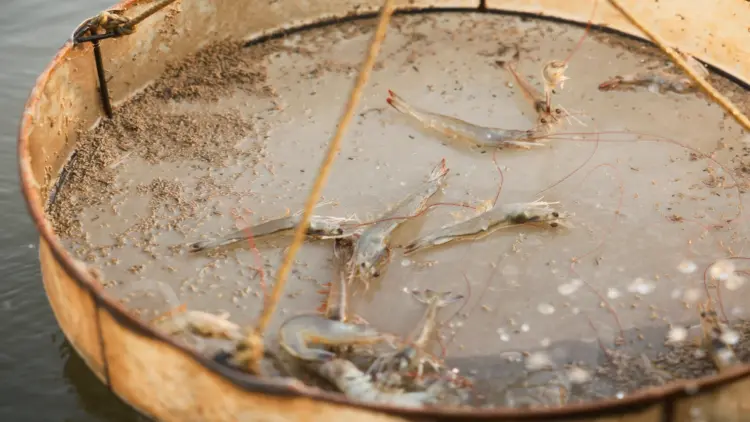India’s shrimp farming industry faces an unprecedented crisis as Trump’s escalating tariff threats push thousands of farmers toward financial ruin and force them to abandon their livelihoods. The devastating 50% tariff proposal has already triggered a 20% price collapse for farmers, wiping out decades of investment in specialized aquaculture infrastructure across Andhra Pradesh. This trade war casualty demonstrates how global political tensions can destroy entire agricultural sectors, leaving farmers with mortgaged properties and unpayable loans while competitors like Ecuador capitalize on preferential treatment.
Trump’s tariff threats are destroying India’s shrimp farming industry
On India’s southern coast, V. Srinivas thrived for two decades by farming shrimp, as the country became the top supplier of the delicacy to the United States. Now, Donald Trump’s 50% tariff threat is forcing many to consider other ways of making money.
Andhra Pradesh state sends the most shrimp from India to the U.S., and farmers there have spent millions of rupees (hundreds of thousands of U.S. dollars) over the years to cultivate high-quality shrimp in saline ponds.
Now they are being hit hard as Indian exporters have slashed the rates they offer farmers by almost 20% after the tariff shock, wiping out most of their profits.
Andhra Pradesh farmers are considering abandoning their specialized aquaculture operations
“I am contemplating if I should do fish farming,” said the 46-year-old from Veeravasaram village who has already mortgaged his family property and has $45,800 in outstanding loans.
“These prices will not help me get any profits, and I will not be able to pay off my loan.”
The United States is the biggest market for India’s shrimp farmers and exporters, with clients including U.S. supermarket chains such as Walmart and Kroger. Last year, total seafood exports from India globally stood at $7.4 billion, with shrimp accounting for 40%.
What makes Ecuador’s competitive advantage so devastating for indian producers
But the industry is now in troubled waters with President Trump’s 25% tariff on imports from India already in place – the highest among major economies, and another 25% levy to kick in from August 27 to penalize New Delhi for buying Russian oil.
By comparison, Ecuador, India’s main rival for shrimp exports to the U.S., faces a much lower 15% tariff, heightening its competitive edge.
In Andhra, there are around 300,000 farmers engaged in shrimp farming, selling products to dozens of exporters who ship to America.
Pawan Kumar, head of the Seafood Exporters Association of India, said orders from U.S. clients have been paused in recent weeks as buyers aren’t willing to absorb the tariff, and neither can exporters, forcing the latter to cut prices they pay to farmers.
Although India also sells shrimp to other countries such as China, Japan, and the UK, and likely will look to expand sales there and diversify into new markets, “that’s not going to happen overnight,” Kumar said.
Alternative markets cannot replace America’s massive shrimp consumption demand
The impact is yet another example of how Trump’s tariff threats are causing business disruptions across the world, especially in India, given it faces one of the steepest levies that have soured its relations with Washington.
In Andhra, six of 12 farmers Reuters interviewed said they were considering putting shrimp farming on hold and looking at fish farming, vegetable retailing or other local businesses to tide them over the crisis. The other six are choosing to wait it out a bit. Each round of shrimp cultivation takes about 2 months or more.
The collapse of America’s shrimp import market from India represents an economic catastrophe that alternative markets cannot quickly absorb, leaving farmers trapped between fixed costs and vanishing revenues. While countries like China, Japan, and the UK offer potential alternatives, these markets lack both the volume capacity and price points necessary to replace American demand, which has driven the Indian shrimp industry’s growth for two decades.
GCN.com/Reuters.


